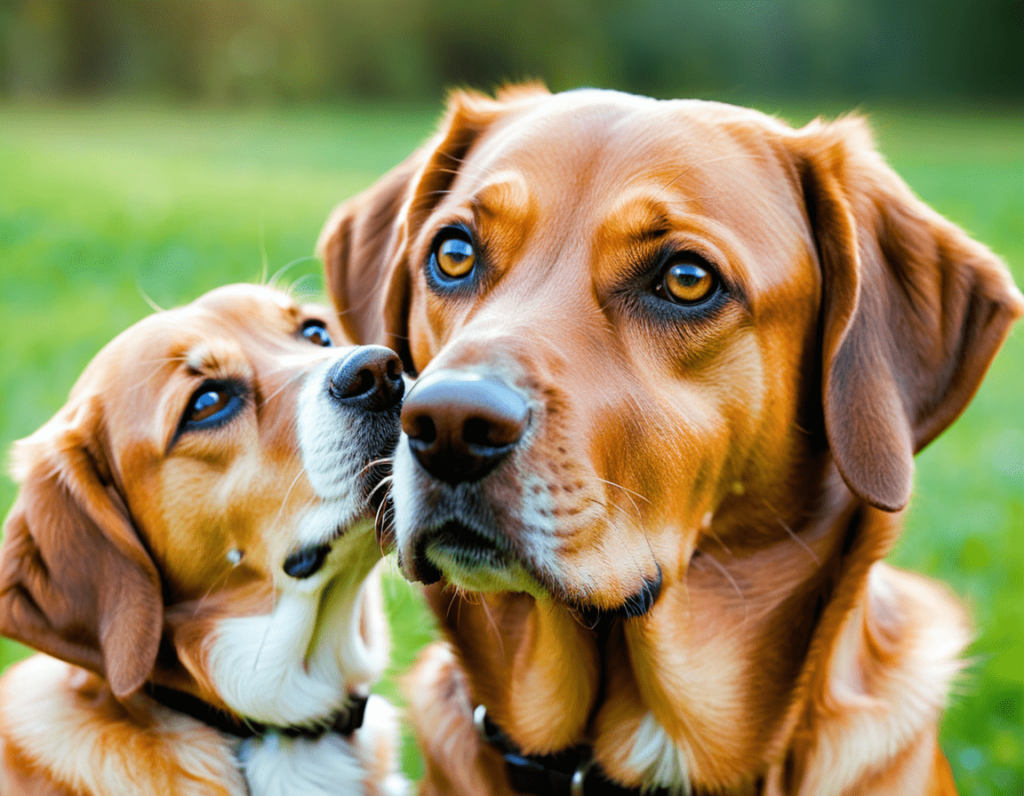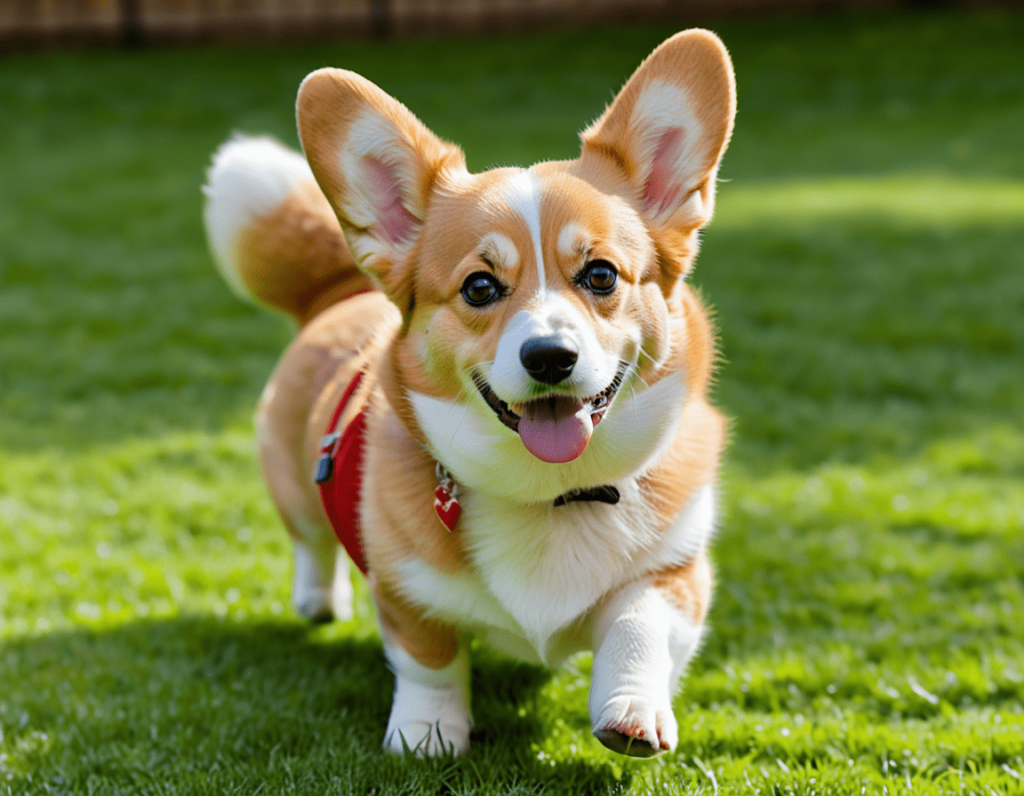
How Dogs Perceive Human Emotions: A Tail of Understanding
Dogs have a unique way of interacting with the world, especially when it comes to understanding human emotions. If you’ve ever seen your pup tilt their head to the side while you’re having a rough day, you might have wondered, “Do they really get it?” Well, grab a treat (for your dog, of course), and let’s explore how our furry friends perceive our feelings!
Dogs: The Ultimate Emotion Detectives
Dogs are like furry little psychologists, constantly observing and responding to our emotions. Their ability to read human feelings is nothing short of amazing. Research has shown that dogs can identify human emotions by interpreting facial expressions, body language, and even the tone of our voices. It’s like they have a PhD in “Human Emotion Studies”—all without stepping paw into a classroom!
Facial Expressions: The Silent Communication
One of the primary ways dogs understand our emotions is through our facial expressions. When you smile at your pup, they can likely tell you’re happy. Conversely, if you frown or look sad, your dog may pick up on that too. It’s like having your own furry cheerleader ready to lift your spirits when you’re feeling down.
And let’s be honest: how many times have you had a bad day, only to come home and find your dog looking at you like you’re the most amazing person in the world? If that’s not emotional support, I don’t know what is!
Body Language: Reading the Room (and You)
Dogs are also experts at body language. They can detect subtle cues in your posture and movements. For instance, if you’re tense and closed off, your dog might approach you cautiously, sensing that something’s off. On the flip side, if you’re relaxed and open, they’re more likely to hop up for a cuddle. It’s like they’re saying, “Hey, I’m here for you! Let’s snuggle it out!”
Tone of Voice: The Bark and the Beat
The way we talk to our dogs matters, too! Dogs are keen listeners and can differentiate between tones in our voices. If you use a high-pitched, cheerful voice, your dog knows it’s playtime. But if your voice is low and firm, they might think they’ve done something wrong (or that it’s time to put their toys away—good luck with that!). So, if you’re feeling down and you say, “Who’s a good dog?” in a sad tone, they might just look confused and wonder if they should be concerned about their good-dog status!
The Smell of Emotions: More Than Just a Sniff
Dogs have an incredible sense of smell—about 10,000 to 100,000 times more sensitive than humans! When we’re feeling emotional, our bodies release different pheromones, which can signal our mood to our dogs. So, when you’re sad or stressed, your dog might smell it before you even realise it! Talk about a nose for feelings!
Empathy: Dogs Feel Too!
It turns out that dogs can also exhibit empathy, a trait that makes them even more special. Studies suggest that dogs may experience emotions similar to humans, which helps them respond to our feelings. For example, if you’re crying, your dog might come over, nuzzle you, and try to comfort you. It’s their way of saying, “Don’t worry, I’ve got your back (and your front and your side)!”
The Bond Between Humans and Dogs
The bond between humans and dogs is one of the most unique and enduring relationships in the animal kingdom. For thousands of years, dogs have been loyal companions, providing not only protection and assistance but also love and emotional support. This bond is based on mutual respect, trust, and a deep sense of connection that transcends species.
Dogs are known for their ability to read human emotions, responding to cues like body language, tone of voice, and even subtle facial expressions. This keen sensitivity helps dogs form strong emotional bonds with their human owners, as they can offer comfort and companionship in times of need. Whether it’s a wagging tail or a gentle nuzzle, dogs have a natural instinct to provide affection and support.
In return, humans provide their dogs with care, shelter, and companionship, creating a relationship built on dependency and love. Studies have shown that interactions with dogs can reduce stress, lower blood pressure, and increase feelings of happiness and well-being. The presence of a dog often leads to improved mental health, providing a source of comfort and reducing feelings of loneliness.
The bond between humans and dogs is not just emotional but physical too. Physical touch, such as petting or cuddling, releases oxytocin, the hormone associated with bonding and affection, in both humans and dogs. This chemical connection reinforces the emotional ties, making the bond even stronger.
Ultimately, the bond between humans and dogs is a two-way street, with both species benefiting from the companionship and connection. Dogs are more than just pets; they are family members, offering unconditional love and loyalty, making them an integral part of human lives.
Final Thoughts: A Unique Friendship
In the end, the way dogs perceive human emotions is a beautiful aspect of their nature. They might not be able to talk, but they communicate in ways that speak volumes. Whether they’re cheering you up with goofy antics or snuggling beside you during a tough time, dogs have an uncanny ability to make us feel understood.
So, give your dog an extra belly rub today—after all, they’re not just pets; they’re our emotional support buddies with a tail!

How Dogs Perceive Human Emotions FAQs:
To further explore the fascinating world of canine emotional intelligence, here are some frequently asked questions:
1. Can dogs sense when their owners are stressed?
Answer: Absolutely! Dogs are incredibly attuned to their owners’ emotions. They can pick up on stress through body language, facial expressions, and even the chemical changes in our bodies when we’re anxious. If your dog seems to follow you around or nuzzle you when you’re stressed, it’s their way of offering comfort and support—just like a fluffy therapist with a wagging tail!
2. Do dogs respond differently to happy versus sad emotions?
Answer: Yes, dogs often respond differently based on the emotions they sense. When you’re happy, they might jump around, wag their tails, and want to play. However, when you’re sad, they may become more subdued, offering comfort by sitting close or resting their heads on you. It’s like they have their own emotional playbook, knowing exactly how to respond in each situation.
3. Why do dogs follow their owners when they’re upset?
Answer: When you’re feeling down, your dog might instinctively want to stay close. This behaviour can be attributed to their protective instincts and their desire to offer comfort. They sense that you’re not quite yourself, and sticking by your side is their way of saying, “I’m here for you.” Plus, let’s be honest—who doesn’t love a good cuddle when feeling blue?
4. Can dogs really help improve human mood?
Answer: Absolutely! Spending time with dogs has been shown to reduce stress, anxiety, and even depression. Their playful antics, unconditional love, and ability to provide companionship can significantly boost your mood. It’s like having a furry cheerleader always ready to lift your spirits—without any pom-poms necessary!
5. What should I do if my dog seems anxious or stressed?
Answer: If you notice signs of anxiety in your dog, such as excessive barking, panting, or destructive behaviour, it’s essential to address the issue. Provide them with a safe space, engage in calming activities, or consult with a veterinarian or dog trainer for additional support. Remember, just like us, dogs can experience stress, and helping them feel secure will strengthen your bond.
Conclusion: Embracing the Canine Connection
Understanding how dogs perceive human emotions allows us to appreciate the special bond we share with our furry companions. Their ability to sense our feelings and respond with love and empathy is a testament to the deep connection that exists between species.
Next time your dog gives you that concerned look or joins you for a cuddle during a tough moment, remember they’re not just there for the treats—they’re there for you. Embrace the unique friendship you have with your dog, and cherish the moments of joy and comfort they bring to your life.


